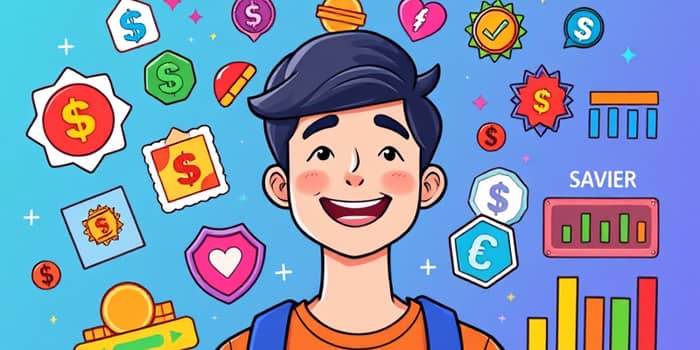
In an era where traditional banking feels impersonal and static, gamification reshapes the way young people interact with money. By introducing routine financial behaviors into engaging experiences, fintech innovators are driving profound changes in saving, budgeting, and investing habits.
As Millennials and Gen Z demand more interactive and personalized financial tools, institutions are leveraging instant feedback and friendly competition to foster long-term engagement and financial literacy, empowering users to make better decisions.
At its core, gamification applies game-design elements—such as points, badges, leaderboards, and progress bars—to financial services. These mechanics tap into intrinsic motivators like achievement, mastery, and social recognition, borrowed directly from psychology and behavioral economics.
Narrative elements further enrich the user experience by creating a contextual storyline around financial goals. This storytelling approach makes abstract concepts more relatable, guiding individuals through step-by-step challenges that mirror classic game quests.
Instant feedback loops—through notifications, visual progress, and reward animations—reinforce positive behaviors, creating a loop of encouragement that sustains user interest and combats the inertia often associated with money management.
The global gamification market in finance was valued at $9.1 billion in 2020 and is projected to reach $30.7 billion by 2025. By 2028, the sector could expand to $48.7 billion, reflecting its broad applicability across industries.
Surveys indicate that 80% of Gen Z and 70% of Millennials prefer digital platforms with interactive features. This demographic shift underscores a decisive move away from static interfaces toward dynamic, gamified solutions that break down complex financial concepts into bite-sized lessons.
As competitors race to capture youthful audiences, financial institutions that integrate data analytics with gamified design see 23 times higher customer acquisition rates and observe a 45% boost in sales margins due to improved engagement.
Qapital stands out by automating savings through user-defined triggers—like rounding up purchases—and rewarding progress with badges. Their user base reports saving 30% more within the first year of adoption.
Moneybox combines micro-investing with an engaging interface, letting users invest spare change. Their mobile app uses interactive charts and progress trackers to maintain user motivation over time.
eToro allows users to create virtual portfolios, follow top investors, and compete on leaderboards. This social trading approach reduces barriers to entry, with 65% of new users citing community features as their primary draw.
Monzo leverages “Savings Pots” with visual progress bars and colorful milestones. Together with playful notifications, Monzo’s approach fosters a sense of achievement whenever users reach a goal.
Voya’s myOrangeMoney employs simulation tools to project retirement scenarios, giving real-time insights into how small changes in savings rates alter future income. Their interactive charts help users visualize long-term impacts.
Emirates NBD’s Fitness Account offers higher interest rates based on daily step counts tracked via fitness wearables, blending physical and financial wellbeing to create a holistic engagement model.
Empirical data demonstrates that gamified finance apps boost saving behaviors by 22%, with users typically increasing their savings by 20% more than peers using traditional tools. The immediacy of rewards accelerates habit formation, making consistent action more likely.
Beyond savings, gamification yields other benefits:
These outcomes translate into real business value: increased lifetime customer value, improved cross-sell opportunities, and stronger brand advocacy fueled by positive user experiences.
Despite its promise, gamification is not without drawbacks. Critics warn of the risk to oversimplify financial education—trading comprehensive planning for momentary rewards can undermine informed decision-making.
Additional concerns include:
Financial institutions must carefully design gamified features to balance engagement with ethical responsibility and regulatory compliance.
Successful gamification hinges on thoughtful design and continuous iteration. Organizations should:
Incorporating these best practices allows fintechs to build deep brand loyalty and emotional connection while safeguarding user interests and brand integrity.
Looking ahead, the integration of AI and advanced analytics will usher in dynamic, hyper-personalized gamified experiences, adapting challenges and rewards in real time based on individual behavior patterns.
Emerging technologies such as blockchain and decentralized finance (DeFi) could introduce new mechanics like tokenization and smart-contract-driven incentives, expanding gamification into peer-to-peer lending and community-funded projects.
Furthermore, augmented reality (AR) and virtual reality (VR) hold the potential to create immersive financial education environments—imagine navigating a virtual city where building maintenance costs relate to your actual budget allocations.
Gamification represents a paradigm shift, transforming mundane financial tasks into engaging journeys that empower users and drive meaningful behavior change. By thoughtfully combining entertainment, education, and incentives, financial institutions can meet the evolving needs of the next generation.
As technology advances, this convergence of play and personal finance will continue to shape more inclusive, resilient, and innovative financial ecosystems, ensuring that managing money is not just a necessity, but an engaging and rewarding adventure for all.
References





